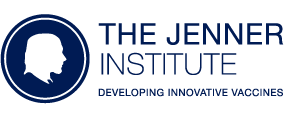Safety and immunogenicity of a varicella vaccine without human serum albumin (HSA) versus a HSA-containing formulation administered in the second year of life: a phase III, double-blind, randomized study.
Faust SN., Le Roy M., Pancharoen C., Weber MAR., Cathie K., Behre U., Bernatoniene J., Snape MD., Helm K., Medina Pech CE., Henry O., Baccarini C., Povey M., Gillard P.
BACKGROUND:A new formulation of the live-attenuated varicella vaccine Varilrix (GSK) produced without human serum albumin (HSA) was developed to minimize a theoretical risk of transmission of infectious diseases. A previous study showed that the vaccine was immunologically non-inferior to the HSA-containing vaccine and well-tolerated in toddlers; low-grade fever was numerically higher in children receiving the vaccine without HSA, but the study lacked power to conclude on this difference. METHODS:In this phase III, double-blind, multi-center study, healthy 12-23-month-olds were randomized (1:1) to receive two doses of the varicella vaccine without (Var-HSA group) or with HSA (Var + HSA group) at days 0 and 42. The primary objective compared safety of the vaccines in terms of incidence of fever > 39.0 °C in the 15-day period post-first vaccination. The objective was considered met if the upper limit of the 95% confidence interval for the between-group difference in the incidence of fever > 39.0 °C was ≤5% (Var-HSA group minus Var + HSA group). Safety, reactogenicity and immune responses were evaluated. RESULTS:Six hundred fifteen children in the Var-HSA group and 616 in the Var + HSA group received ≥1 vaccination. Fever > 39.0 °C was reported in 3.9 and 5.2% of participants in the Var-HSA and Var + HSA groups, with a between-group difference of - 1.29 (95% confidence interval: - 3.72-1.08); therefore, the primary objective was achieved. Fever rates post-each dose and the incidence of solicited local and general adverse events (AEs) were comparable between groups. Unsolicited AEs were reported for 43.9 and 36.5% of children in the Var-HSA group and 45.8 and 36.0% of children in the Var + HSA group, during 43 days post-dose 1 and 2, respectively. Serious AEs occurred in 2.1% (group Var-HSA) and 2.4% (group Var + HSA) of children, throughout the study. In a sub-cohort of 364 children, all had anti-varicella-zoster virus antibody concentrations ≥50 mIU/mL post-dose 2; comparable geometric mean concentrations were observed between the groups. CONCLUSIONS:The varicella vaccine formulated without HSA did not induce higher rates of fever during the 15 day-post-vaccination period, as compared with the original HSA-containing vaccine. The two vaccines displayed similar safety and immunogenicity profiles in toddlers. TRIAL REGISTRATION:NCT02570126 , registered on 5 October 2015 (www.clinicaltrials.gov).

